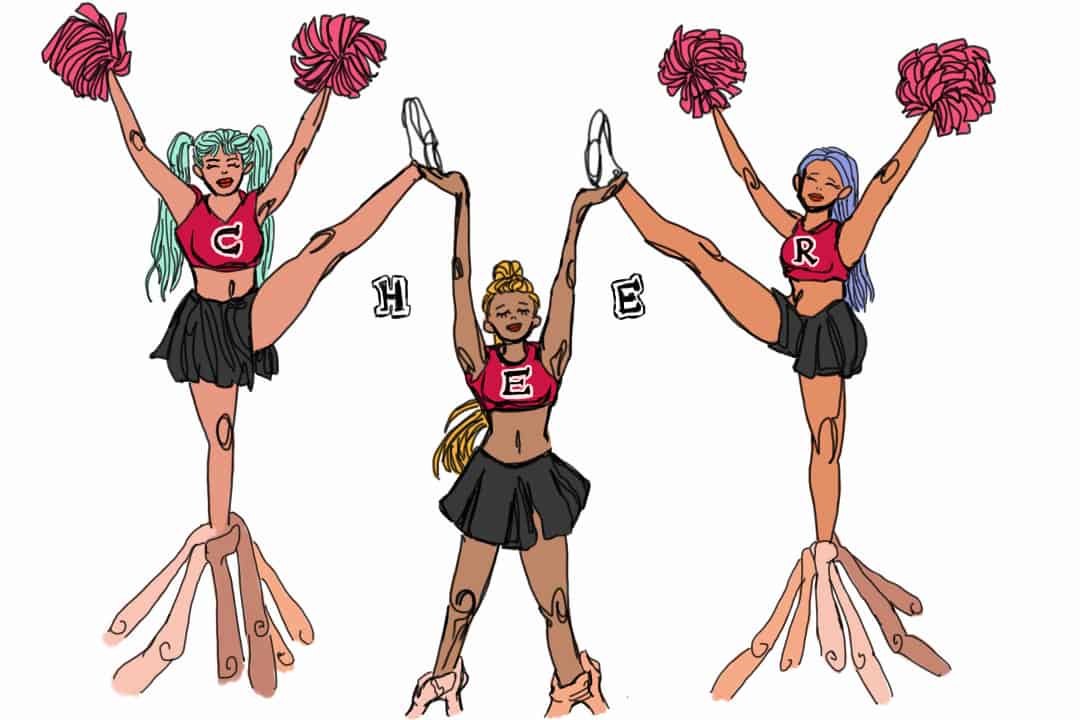Cheer is Netflix’s show du jour, a perfect encapsulation of the bingeable show archetype. Therefore, everyone you know has likely seen it. But if you haven’t, let me introduce you to the emotional rollercoaster that is Cheer.
The show follows the cheerleading team of Navarro College in Corsicana, Texas, as they prepare for their national championship in Daytona Beach, Florida. Comprised of six hour-long episodes, the show didn’t hook me in right away. Rather, the real-world tension of Cheer builds slowly. By the end, my roommate and I were holding our breath as we watched the team perform their set at the competition in Daytona Beach — clocking in at a brief two minutes and 15 seconds.
At the helm of the team sits Monica Aldama, who is everything you could want from a leader: stern yet supportive, intimidating yet kind.
A workaholic on the down low, the team rises to victory because of Aldama. It took me a while to get used to her, but watching Aldama help a teammate navigate a sensitive legal issue, speak clearly and calmly to her athletes, and talk openly about her support for her athletes, regardless of their sexuality — well, it warmed my cold heart. “I will debate you up one side and down the other if you talk about my boys,” Monica said in her characteristic no-nonsense tone. “And I won’t budge about my beliefs at all.”
Cheer drags you along with the constant injuries and emotional stressors on these young adults, as they show up to their never-ending stream of rehearsals and perform smiling — Aldama would expect nothing less.
Being a docuseries and not reality TV, Cheer isn’t flashy or overproduced. When a teammate goes down, there aren’t any cameras in their face. Instead, we watch from the sidelines alongside everyone else — and if we’re dedicated viewers, we might also partake in the requisite 50 pushups as a punishment for letting someone fall.
Cheer’s approach also isn’t going to lay out the intricacies of its world for you. It won’t tell you what the difference between a ‘top girl’ and a ‘flyer’ is. Hint: all top girls are fliers, but not all fliers are top girls. Cheer doesn’t ask you to care about cheerleading; it forces you to.
If you’re looking for another reason to watch it, the stunts they do are genuinely incredible. “How did they do that?” my roommate and I screamed every time a girl would flip up backward to stand on top of a pyramid made out of other humans.
Among all the injuries and emotional turmoil, it’s easy to question why they’re doing it in the first place. But everyone chosen for the team gets a scholarship, and through their personal narratives, it’s clear that cheerleading is a form of social support for many of the athletes. For example, teammate Jerry Harris lived with his “Cheer moms” after his mother passed away from cancer. For cheer team member Morgan Simianer, cheerleading was a constant in her life during a period of time when she lived alone in a trailer.
But even as the sport continues to gain recognition and play such an important role in people’s lives, there’s not really any sort of sustainable future in cheerleading past the college level.
Professional cheerleaders are notoriously underpaid. Estimates vary due to the secrecy of teams, but NFL cheerleaders probably make around 75–150 USD per game, and they are not paid for their time in rehearsal, nor reimbursed for costs such as hair and makeup. A 2014 lawsuit by a cheerleader for the Oakland Raiders estimated her season pay to be at 1,250 USD — about 5 USD an hour.
For my part, I shamefully didn’t know that U of T had a cheerleading team until I reached out to them for this article.
“I really enjoyed the show,” wrote Kyra Smith to The Varsity. Smith is a third-year student studying mathematics and statistics who has been on U of T’s cheer team for two years. While the U of T team practices less during the school year, they compete at the end of every semester.
She commented that what was most similar between her experiences and the show was the “immense sense of trust and family on the team,” seeing as a lot of what they do is “in essence one big trust fall.”
Emily Naing, a fourth-year student on U of T’s team, wrote to The Varsity that “cheerleading in Canada isn’t as developed as in the US, so our level of difficulty isn’t as high as what you would see on the show.” Even so, Naing wrote, “I think all cheerleaders have the same drive and dedication towards the sport.”
I guess that gets close to the heart of Cheer: the drive and dedication of these cheerleaders, pushing their bodies past what should be possible, and striving to be the best, no matter where they come from.
Maybe I’ll go to the gym this week?


